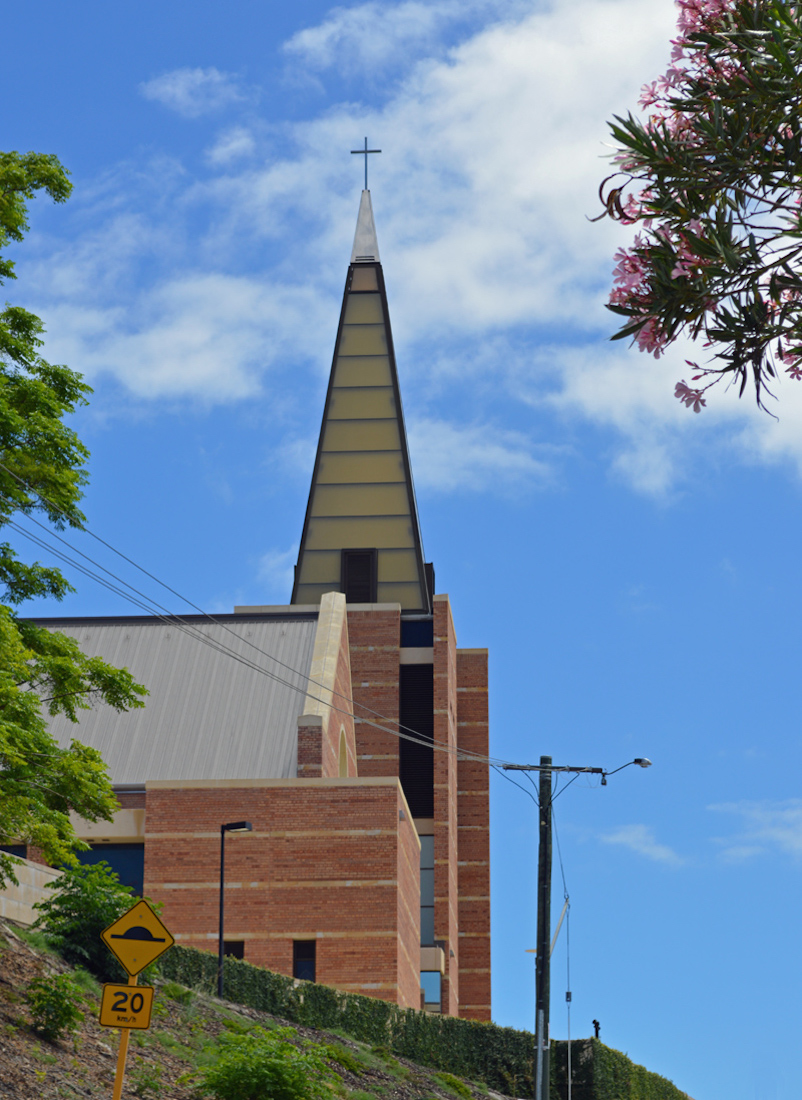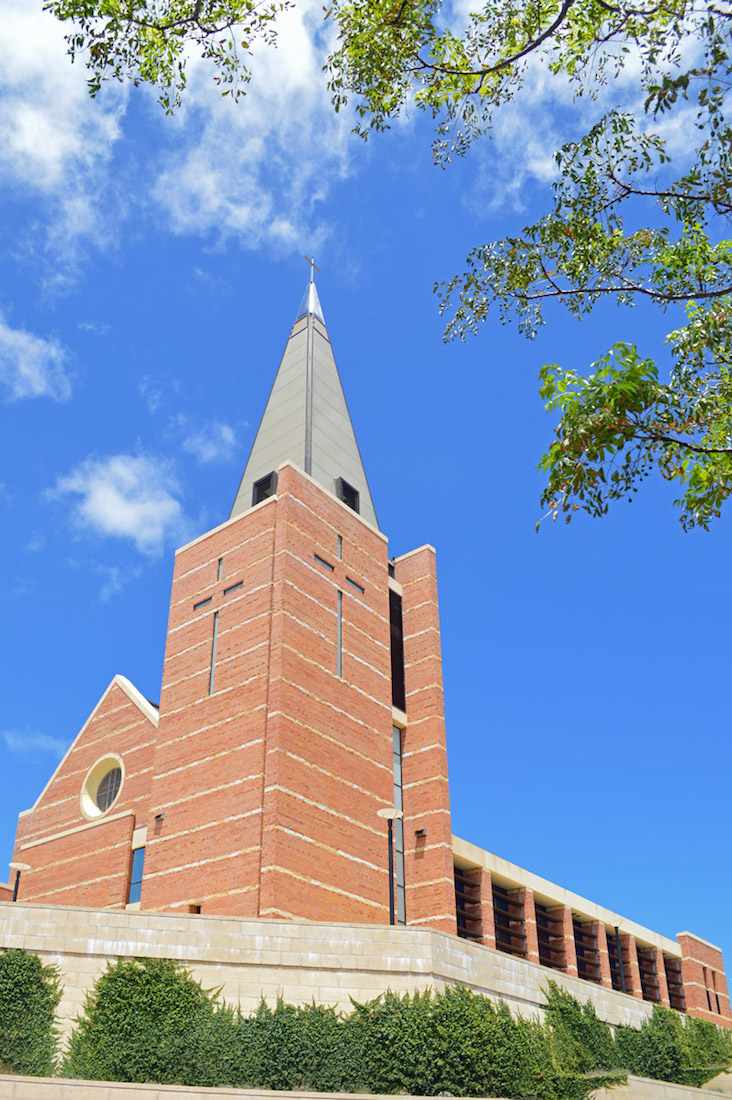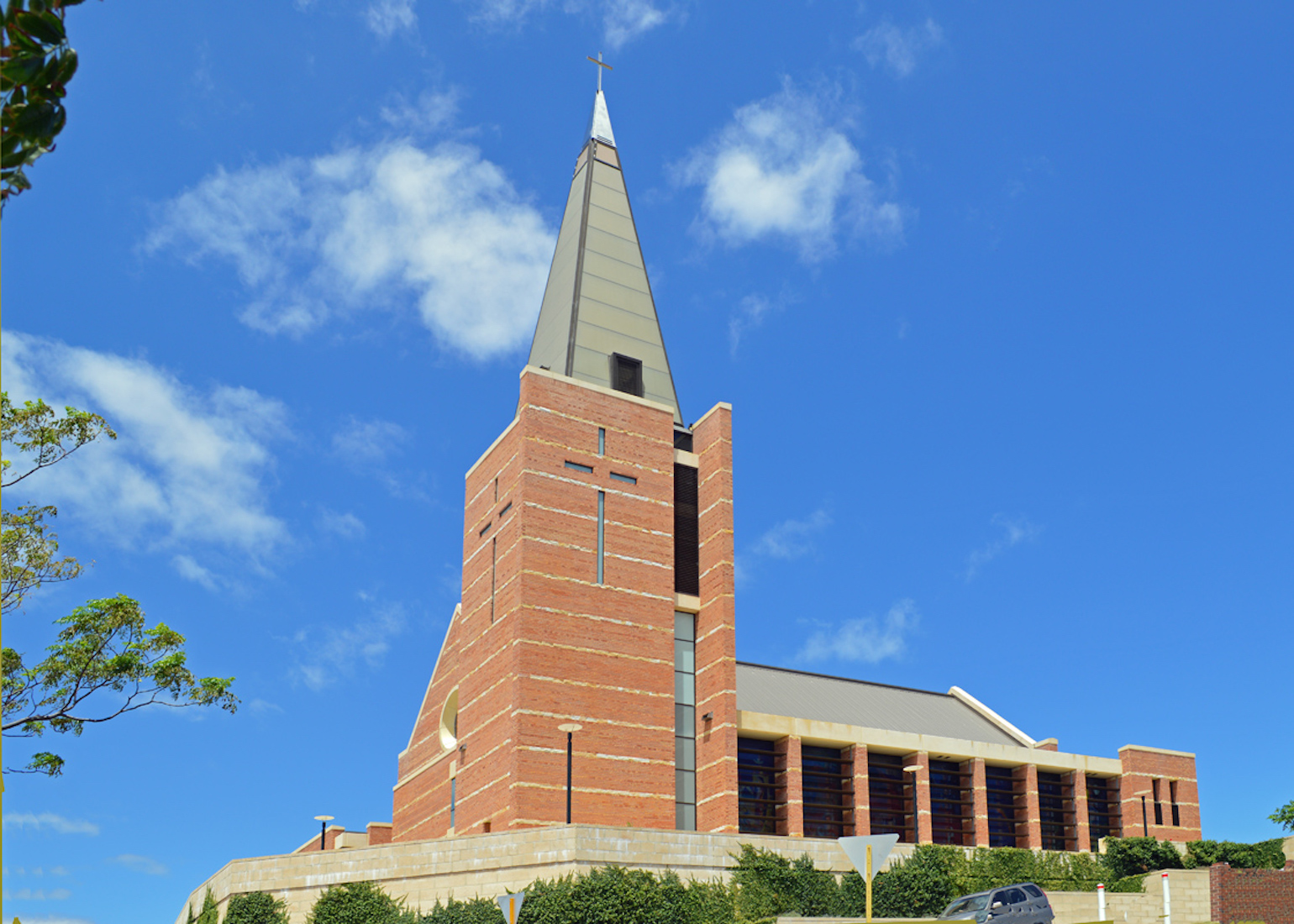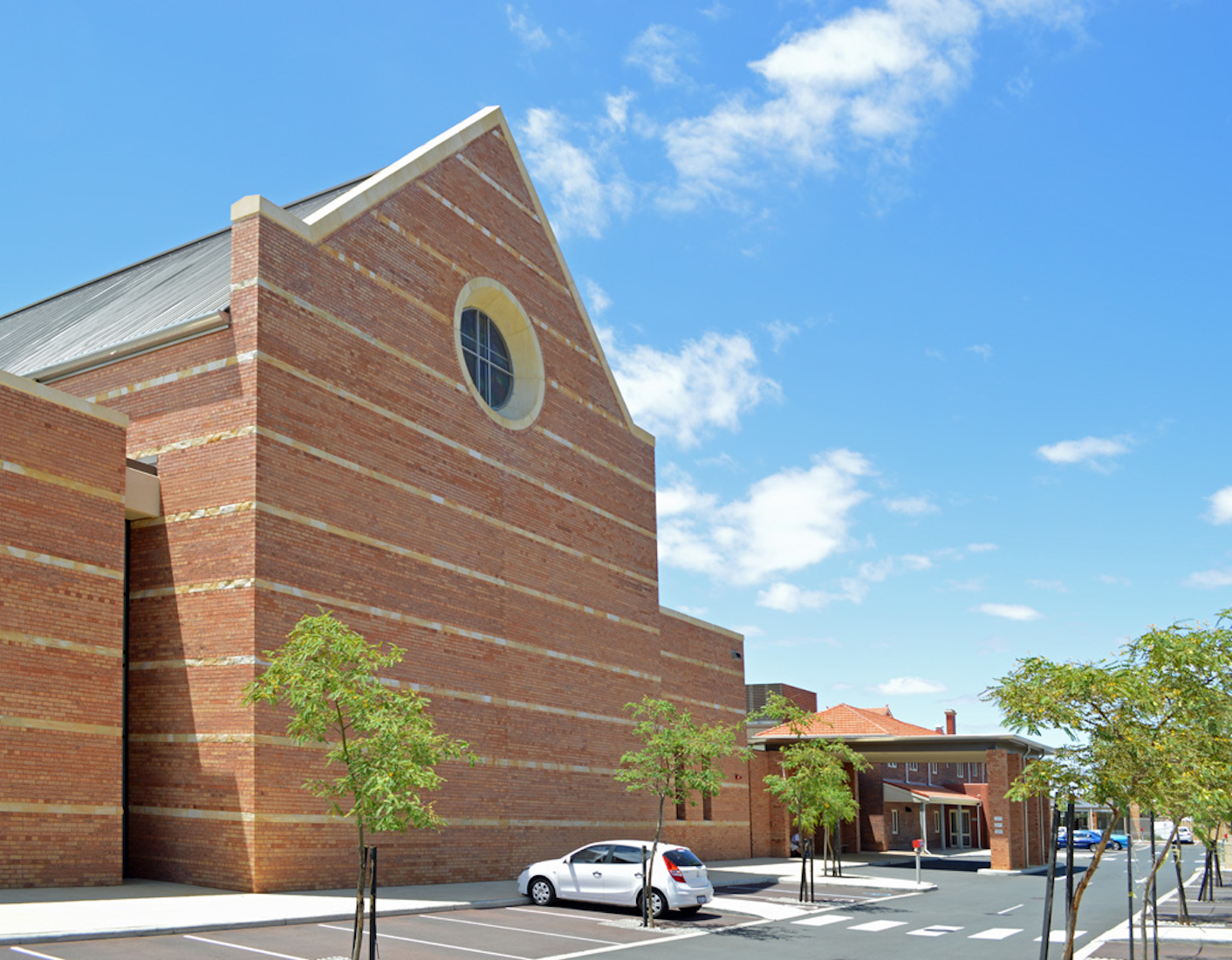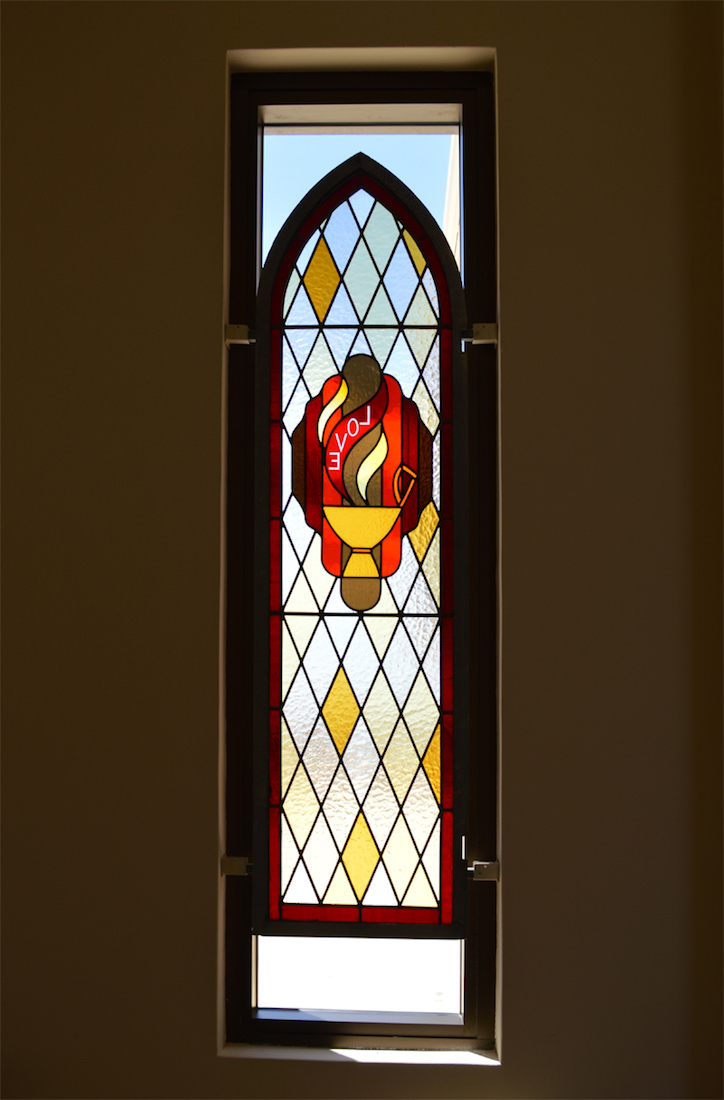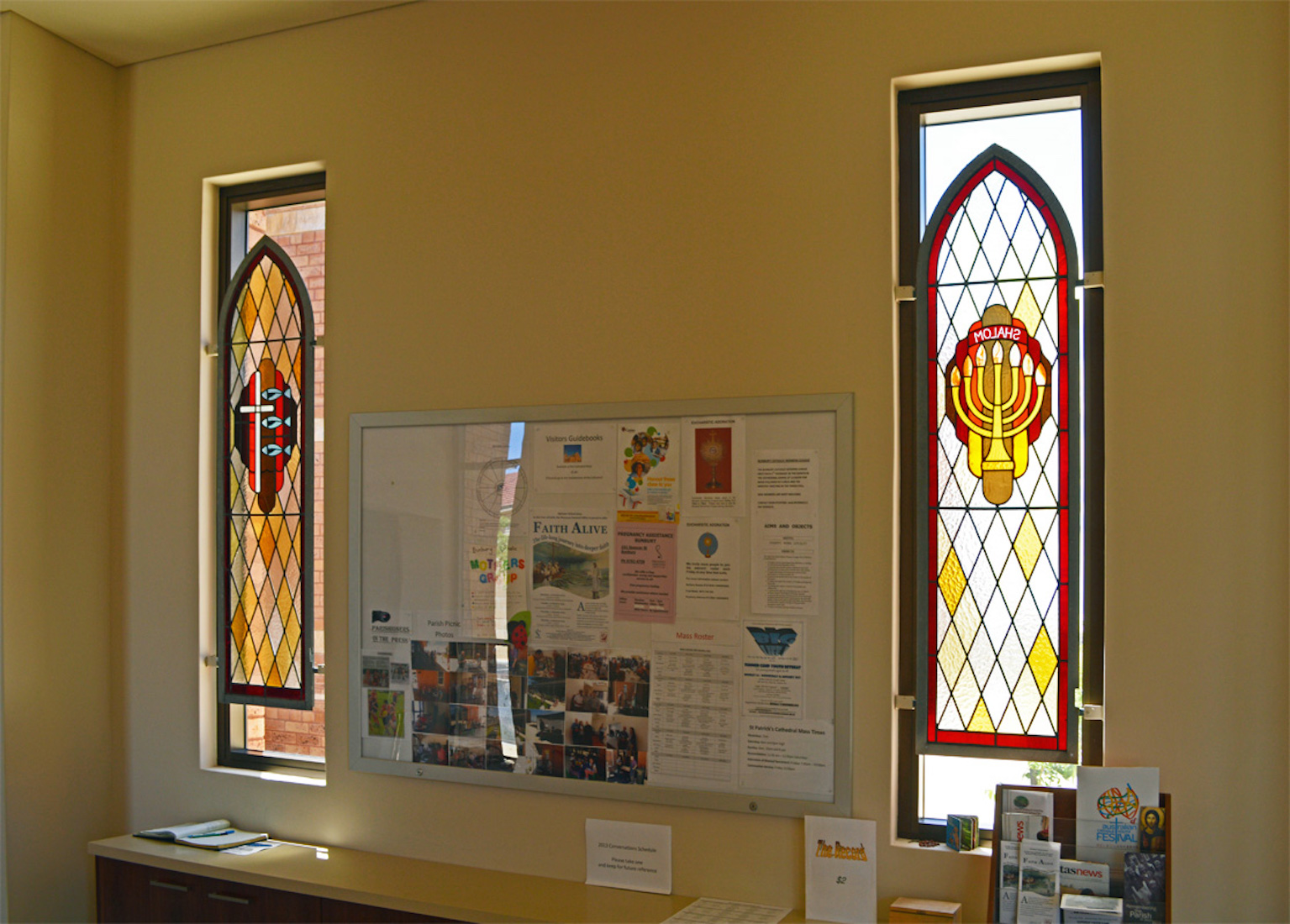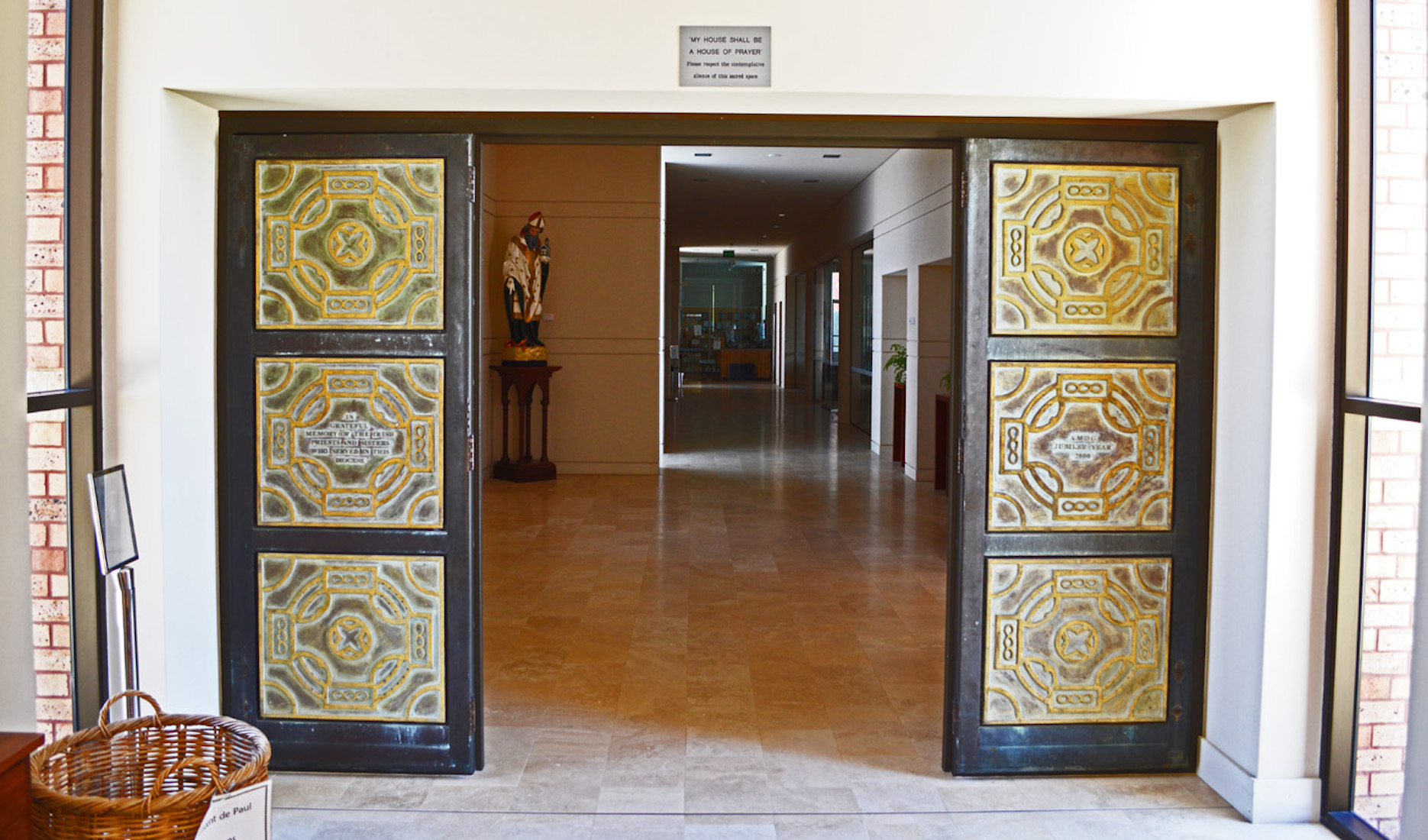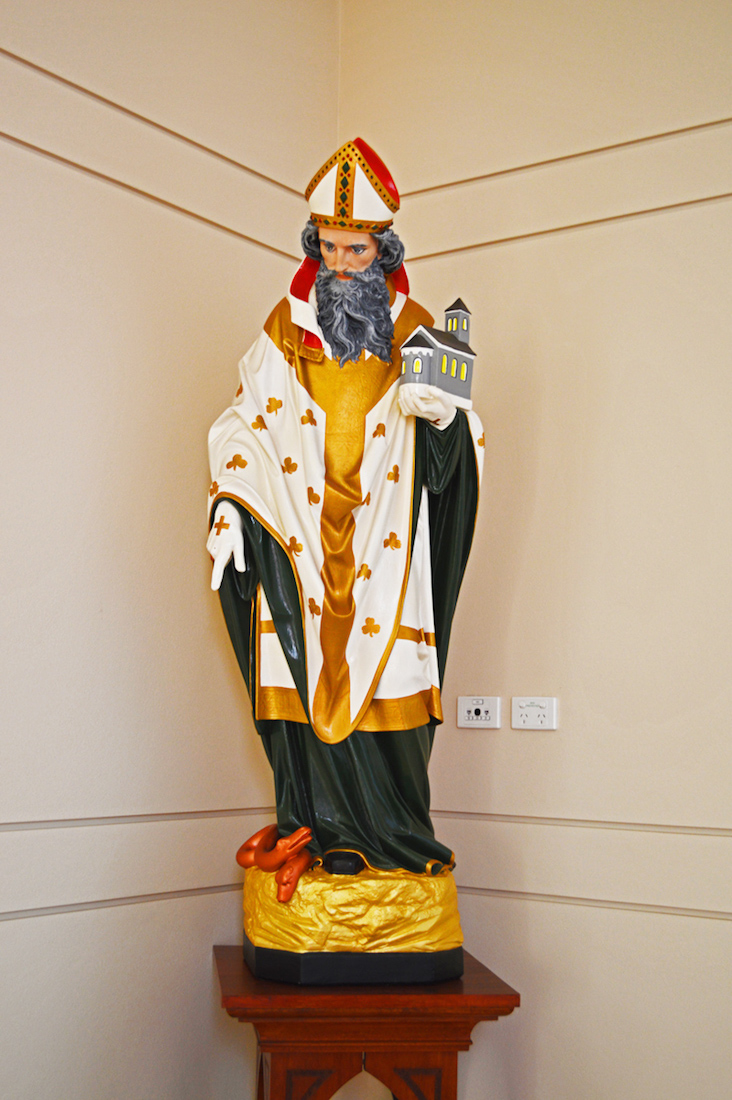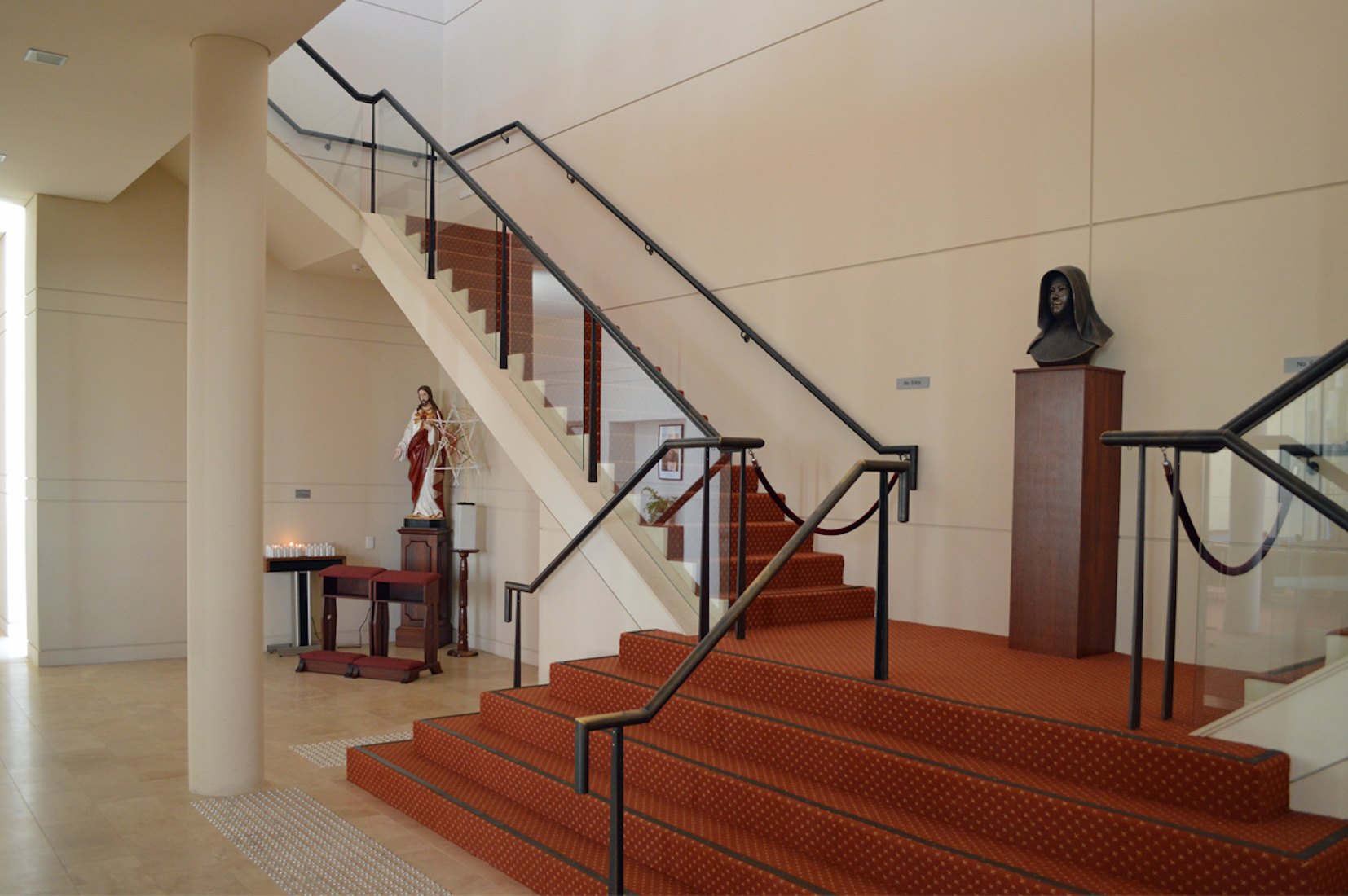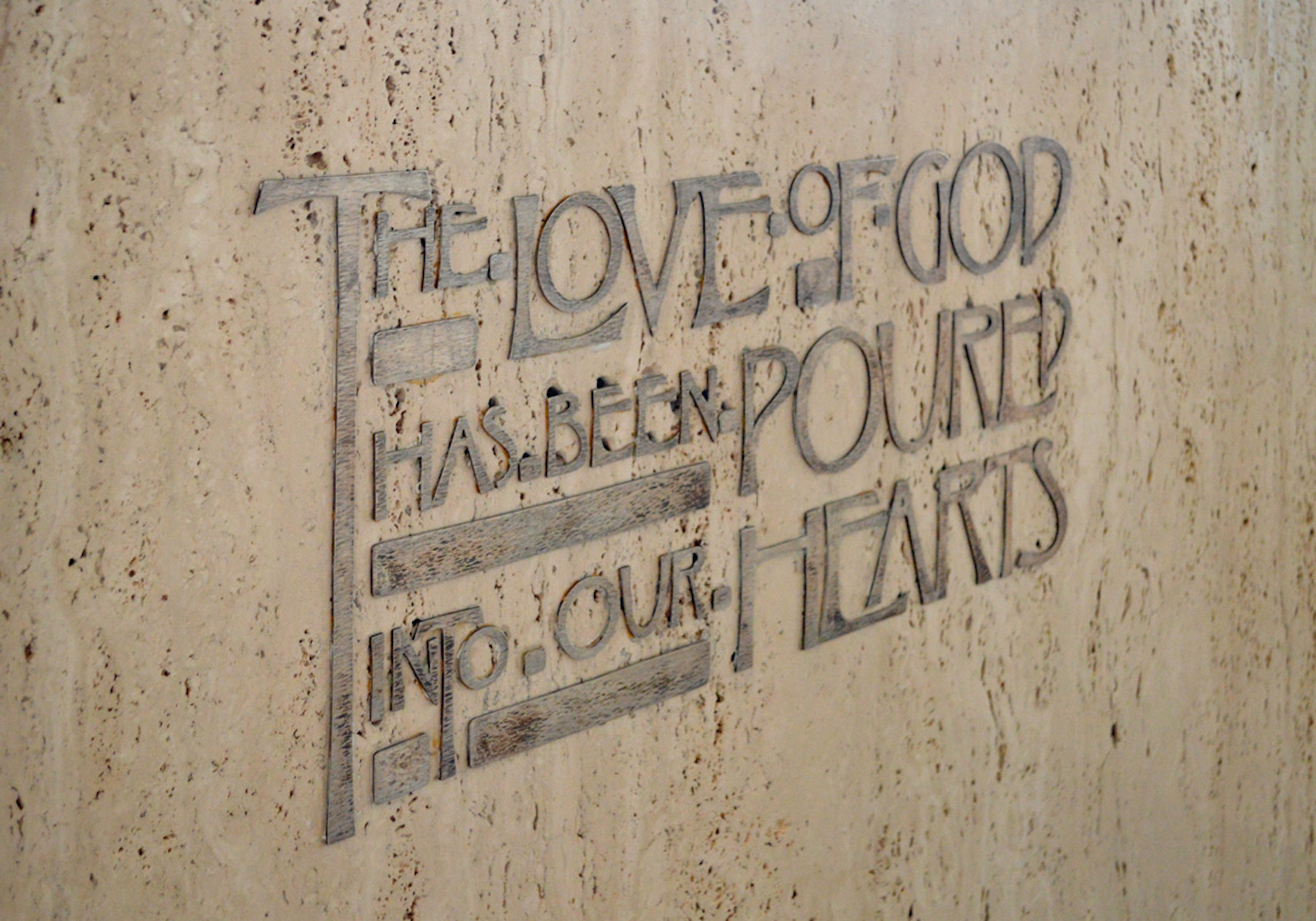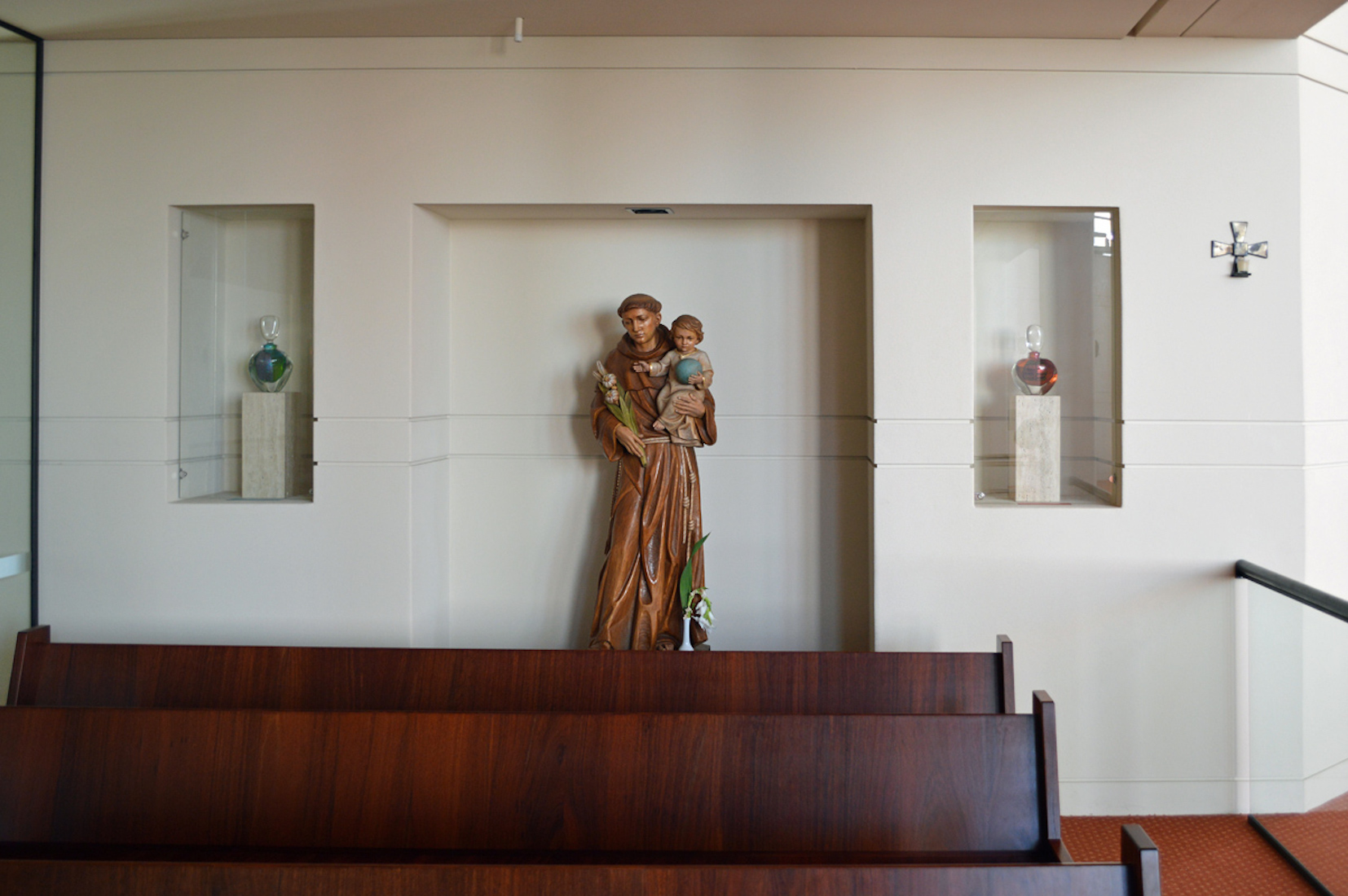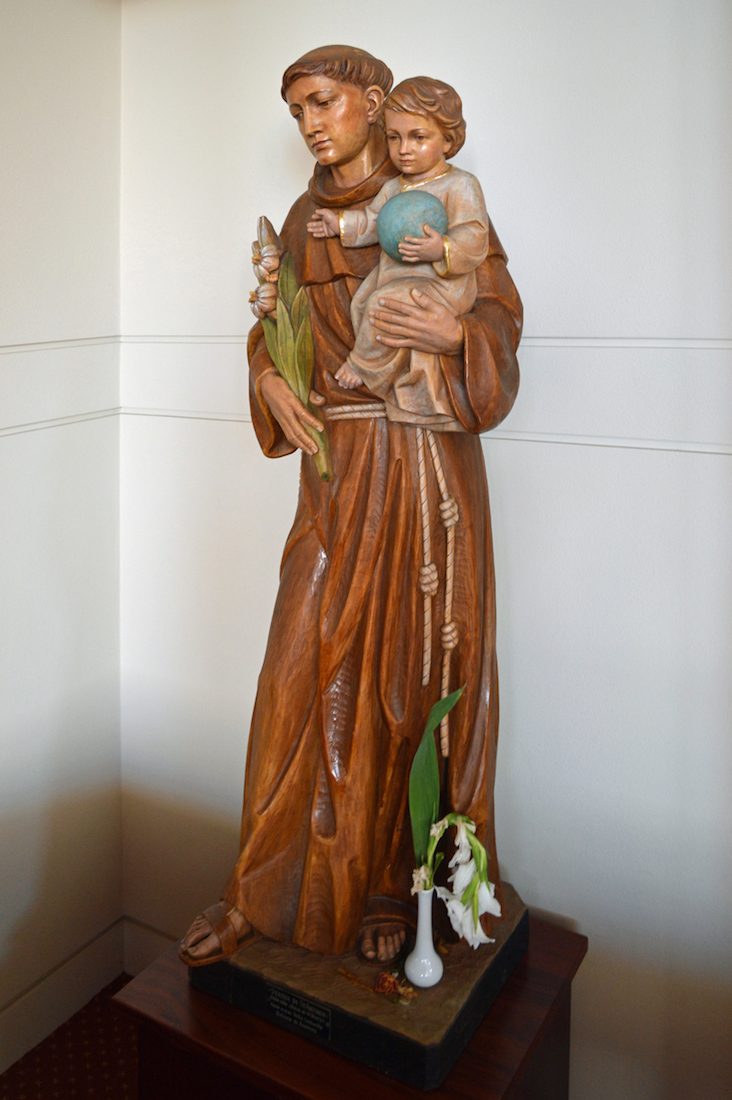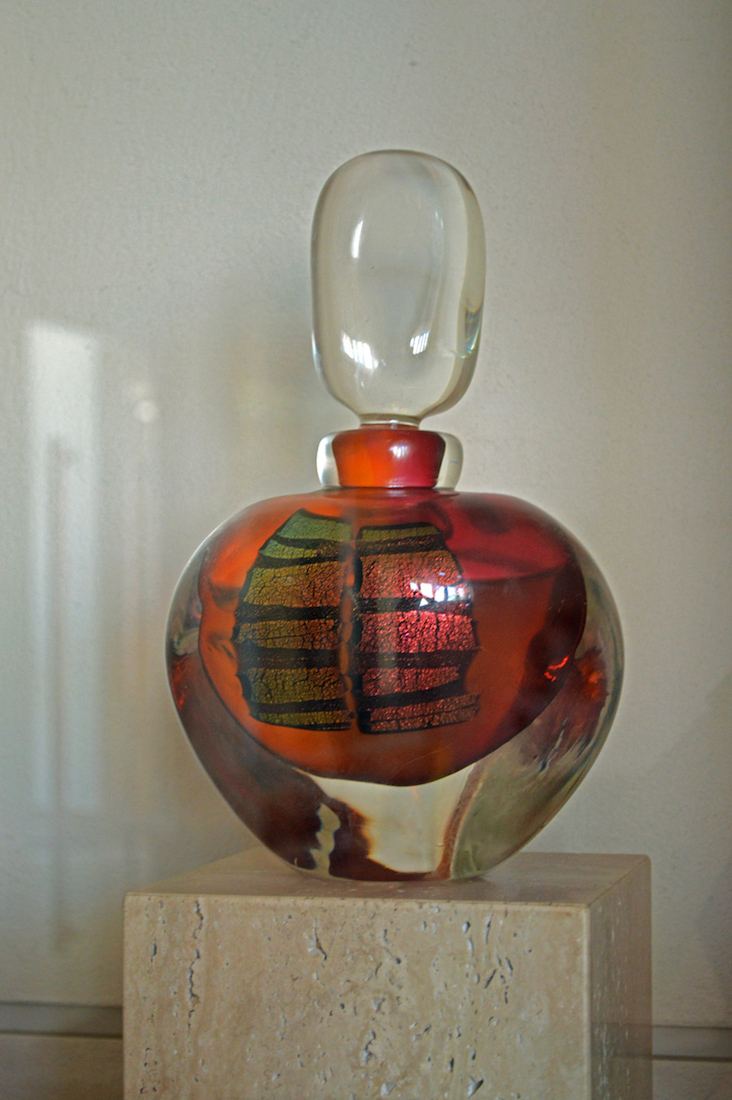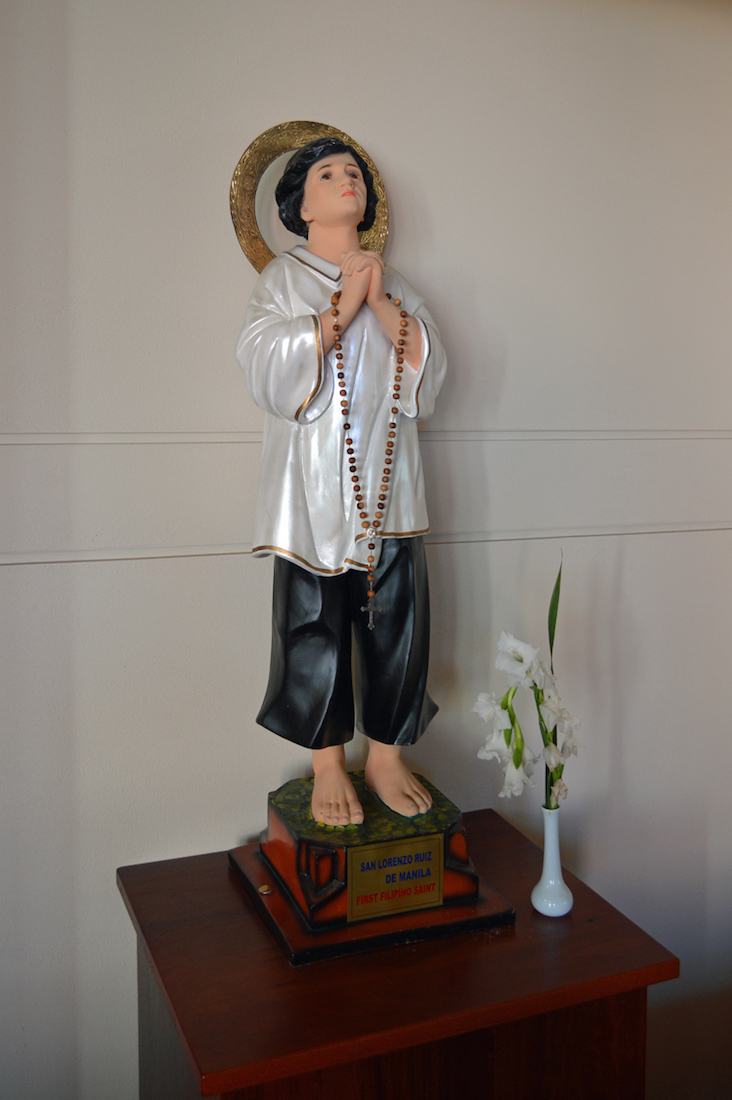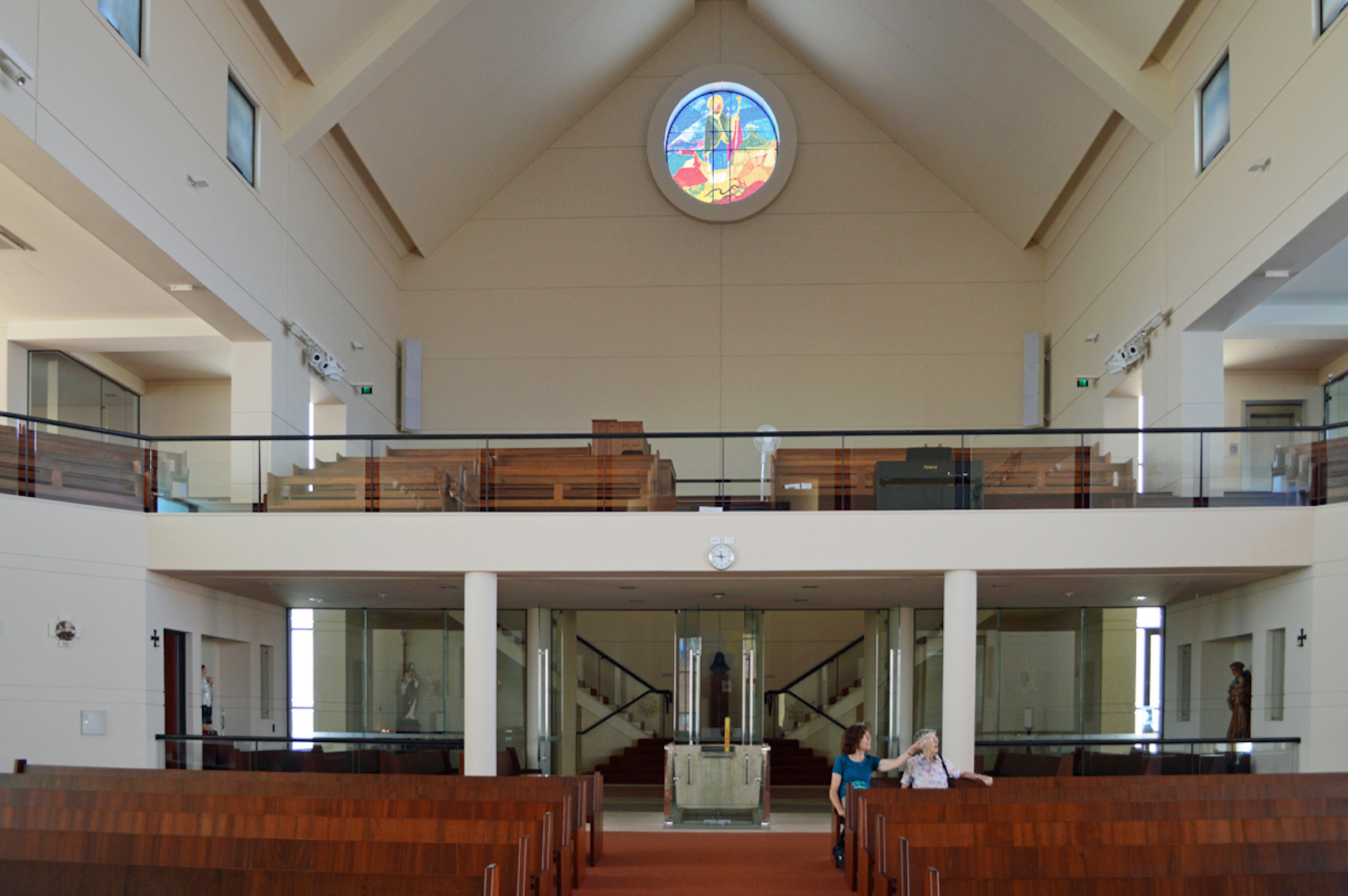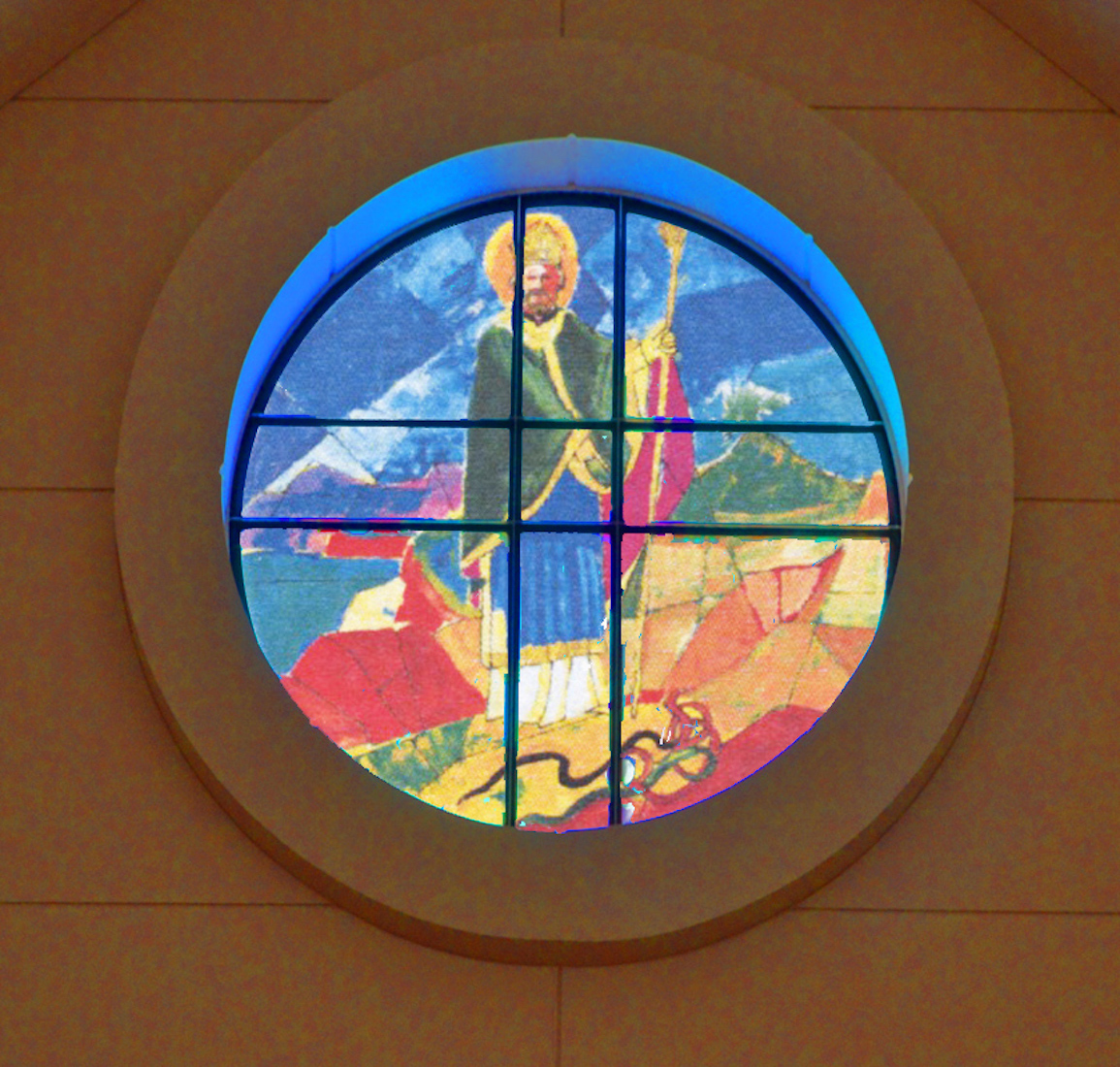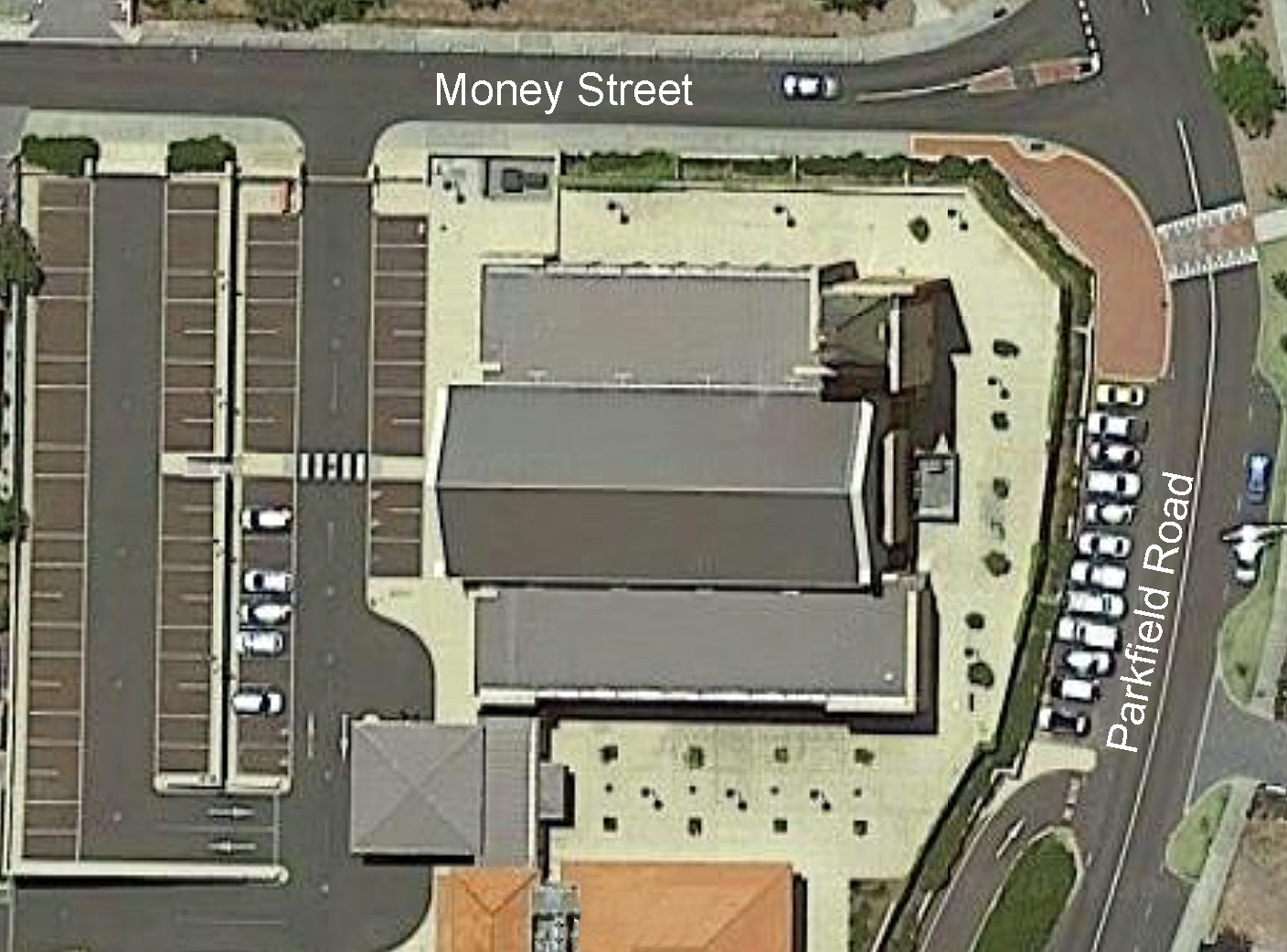
This satellite view from Google Maps shows the Cathedral on the corner of Money Street and (a rather misplaced!) Parkfield Street. In fact the Cathedral adheres to our liturgical convention of having the sanctuary at the Eastern end. The shape of the body of the Cathedral is approximately square, with a central East-West gable roof, and a bell tower in the North-East corner. The Cathedral precinct spreads over 1.25 hectares. PLAN
2. NORTH VIEW
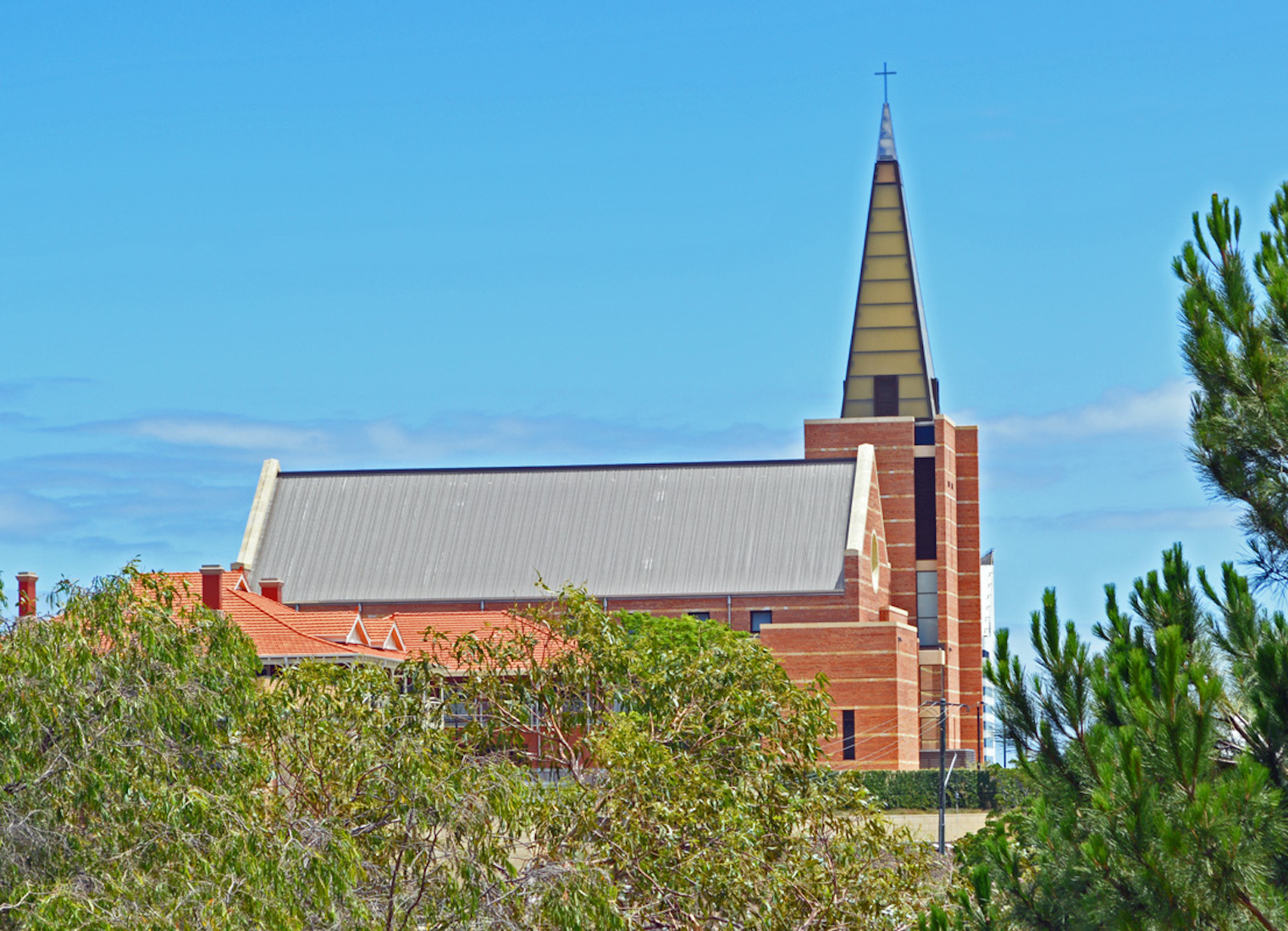
At the time of writing [2013], St Patrick’s Cathedral is the newest Cathedral in Australia. It replaces the former Cathedral which was demolished as a result of a tornado tearing through Bunbury, and shifting the old Cathedral on its foundations. The new Cathedral was built over a 5 year period and was dedicated on 17th March 2011. This is the view of the Cathedral as seen while travelling northwards up Parkfield Street.
3. NORTH WEST CORNER
The photograph shows the South East corner of the Cathedral, as seen from Parkfield Street. The new Cathedral is an impressive building overlooking Bunbury. The spire reaches 46.8 metres into the sky (from floor level to the top of the Cross).
4. BELL TOWER
This North East aspect is the view enjoyed by workers and visitors in the City. The Cathedral stands prominently on a rise, a short walking distance from the business centre. The crosses on the tower make a strong statement about this being a Christian presence in Bunbury. The bell tower contains a single lower bell from the old cathedral. This bell was cast in Dublin in 1885, and it sits on what was once the baptismal font from the old cathedral. There are eight new bells further up inside the bell tower. These can be rung by hand, or electronically.
5. SOUTH EAST VIEW
The design of the tower is interesting, with each wall protruding a distance beyond the adjoining face. The spire itself is made of glass. On special occasions such as Christmas and Easter, the whole spire is illuminated at night. Every night, the cruciform openings on the sides of the bell tower light up at dusk to remind people of the symbol of Christ’s presence among them.
6. EAST WALL
You would have to say that the West wall makes a statement about strength and permanence, and a Cathedral built to last! The Cathedral itself is linked across by a ‘cloister’ to a complex of offices, meeting rooms, and the administration centre for the diocese. We enter the Cathedral through Western doors into this cloister.
7. CLOISTER WINDOW
The name ‘cloister’ for the spacious link between Cathedral and Administration is not a traditional use of the word! But perhaps new cathedrals have to redefine old words. This leadlight window in the cloister is one salvaged from the old Cathedral prior to its demolition.
8. CLOISTER WINDOWS
Here is a slightly wider view of the cloister, showing two more of the leadlight windows rescued from the old Cathedral. In fact there are eleven of these windows displayed throughout the Cathedral precinct.
9. ENTRY DOORS
As we leave the cloister, we pass through the ‘Quinn doors’ into what is known as the narthex. With the definition of ‘narthex’ traditionally being church ‘porch’ or ‘lobby’, one feels there is a modern redefining of the word for this vast space! The Quinn doors were salvaged from the original Cathedral. They were commissioned by Bishop Quinn to celebrate the Jubilee of the Bunbury Diocese, and are made from solid copper. Each door weighs over a hundred kilograms. The sign above the door reads ‘MY HOUSE SHALL BE A HOUSE OF PRAYER Please respect the contemplative silence of this place’.
10. ST PATRICK
The statue of St Patrick used to stand in the entrance of the old cathedral. It was salvaged and restored. We notice the snake at St Patrick’s feet. The absence of snakes in Ireland gave rise to the legend that they had all been banished by St. Patrick who chased them into the sea after they attacked him during a 40-day fast he was undertaking on top of a hill. We notice too that the Saint is holding a church. It is claimed that in the 5th century, Patrick planted more than 200 churches and won 100,000 people to Christ.
11. NARTHEX
Central to the narthex is this double flight of stairs leading to the gallery. Australia’s St Mary MacKillop keeps watch from her pedestal. This bronze bust of St Mary of the Cross (Mary MacKillop) was made using the same cast that made the bust given to Pope Benedict XVI by the Sisters of St Joseph when he visited Australia for World Youth Day in 2008. The original sculpture was made by Perth artist Jerry Darwin. Several replicas remain in Australia but the exact location of the original is unknown.
12. SACRED HEART
Near the gallery stairs stands a statue of the Sacred Heart, which was salvaged from the old cathedral and restored. Nearby stands a stellar work of art of unexplained significance. The Sacred Heart (also known as Most Sacred Heart of Jesus) is one of the most widely practised and well-known devotions, taking Jesus' physical heart as the representation of his divine love for humanity. The narthex contains three historic plaques which we shall return to. At the Northern end of the narthex we find the Cathedral shop, and public conveniences.
13. ENTRY TEXT
Leaving the narthex, we pass through the glass entry doors into a space known as the baptistery (baptistry) on the way to the main body of the Cathedral. Alongside the Northern entry door is this comforting and affirming verse ‘The Love of God has been poured into our hearts’ based on Romans 5:5.
14. BAPTISTERY
In the centre of the baptistery is the large baptismal font. The font is located at the entry to the nave to symbolise the journey through the waters of baptism to the altar. Like everything in this Cathedral, the font is large! Inside the font sits the paschal candle. This is a large candle lit during the ceremony of the fire at the Easter Vigil. It is lit at every mass during the Easter season, and is also used at baptisms and funerals. This candle symbolises Christ as the light of the world, and his presence in the midst of his people.
15. BAPTISTERY NORTH WALL
The floor tiles in the baptistery have been laid in a cruciform or cross pattern. On each side of the baptistery is a statue: here of St Anthony, the patron saint of the Italian community. The baptistery also houses the sacred oils used in the various sacraments. The oil of baptism, the oil of catechumens and the oil for the sick. Two of these are shown here. There are two confessionals, or reconciliation rooms, one on either side of the baptistery. They are situated between the baptistery and the altar to symbolise that once we have been baptised, we must reconcile with Jesus in order to receive him in communion at His altar.
16. ST ANTHONY
On the Northern side of the baptistery stands this statue of Saint Anthony of Padua, patron saint of the Italian community. The lilies symbolize Saint Anthony’s purity. The Baby Jesus is reminiscent of the vision that Anthony had. It also expresses his attachment to the humanity of Christ and his closeness to God. His Vision of the Baby Jesus is an event which, more than any other, characterizes the contemplative spirituality of St Anthony. The story is that Anthony often went to a castle near Padua toward the end of his life and spent time praying in one of the hermit cells. One night, his little cell suddenly filled up with light. Jesus appeared to Anthony in the form of a tiny child. Passing by the hermitage, the local count saw the light shining from the room and St. Anthony holding and communicating with the infant.
17. SACRED OILS
This is a vial containing one of the sacred oils used in the sacraments. There are three kinds of sacred oils, all of which signify the work of the Holy Spirit. The three holy oils are: • The Oil of Catechumens, used in baptism along with water, in the consecration of churches, in the blessing of altars, in the ordination of priests, and, sometimes, in the crowning of Catholic kings and queens. • The Holy Chrism or ‘Oil of Gladness’, which is olive oil mixed with a small amount of balm or balsam. It is used in confirmation, baptism, in the consecration of a bishop, the consecration of various things such as churches, chalices, patens, and bells. • The Oil of the Sick, which is used in unction.
18. ST LORENZO
On the South side of the baptistery is this statue of Saint Lorenzo Ruiz (ca. 1600 – 1637), also known as Laurentius Ruiz de Manila, or San Lorenzo Ruiz de Manila. He is the first Filipino saint venerated in the Roman Catholic Church. He was killed for refusing to leave Japan and renounce his Roman Catholic beliefs during the persecution of Japanese Christians under the Tokugawa Shogunate in the 17th century. Saint Lorenzo is patron saint of, among others, the Philippines and Filipinos.
19. WEST WALL GALLERY
If we walk into the nave and turn around, our attention is drawn to the circular Western window, and the large gallery. The pews in the gallery were salvaged from the original cathedral, and were restored by Year 10 students from Bunbury Catholic College in 2010. The gallery also holds the organ, a Trillium 927 model three tier keyboard organ, made by Rodgers Instruments in the USA.
20. WEST WINDOW
I am fascinated by the way this new Cathedral has adapted the traditional features of cathedrals from the past. This then is the western ‘rose’ window – a painting of St Patrick, Patron Saint of the Cathedral. It is made from a painting by West Australian artist Robert Juniper. That snake is about to be banished again!


